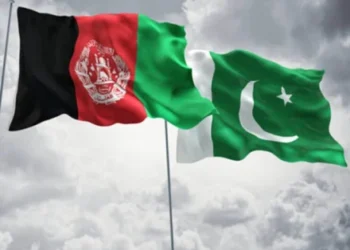Pakistan is currently facing one of the most alarming monsoon seasons in recent years, with high-level flooding reported across major rivers in Punjab and widespread devastation in Gilgit-Baltistan due to glacial and flash floods. While rescue operations are in full swing in Punjab, thousands of affected people in Gilgit-Baltistan are still waiting desperately for government assistance and access to basic necessities such as food, water, shelter, and medical supplies.
Mass Evacuations in Punjab as Flood Alerts Intensify
According to Rescue 1122 spokesperson Farooq Ahmed, more than 24,000 people have been shifted to safer places from the lower reaches of the Indus, Chenab, Ravi, and Sutlej rivers since Saturday. The evacuation comes amid warnings of high-level flooding across eastern Punjab, triggered by continuous heavy monsoon rains and additional water inflows from across the border.
The evacuation efforts were particularly concentrated in Kasur, Okara, Pakpattan, Bahawalnagar, Vehari, and Narowal, districts that received a high flood alert after authorities in India released excess water into rivers flowing into Pakistan.
Ahmed stressed that the upper reaches of these rivers are facing moderate to high-level flooding, while forecasts predict even more rainfall in the next 48 hours, further intensifying the situation.
Provincial Disaster Management Authority (PDMA) Issues Fresh Warnings
The Provincial Disaster Management Authority (PDMA) has issued flood alerts for multiple regions of Punjab. Officials have warned of ‘high to very high’ flooding risks in the Chenab, Ravi, and Sutlej rivers, while urban flooding remains a looming threat in Rawalpindi, Lahore, and Gujranwala divisions.
Hydrological data shows that heavy rainfall in the upper catchment areas is raising water levels at a dangerous pace. Authorities have also highlighted the possibility of spillways being opened in major dams, which could worsen flooding in downstream areas.
Current Water Levels and Dam Conditions
The flood situation across major rivers and reservoirs paints a concerning picture:
- Sutlej River: A high-level flood warning has been issued at Harike, where both the upper and lower areas are witnessing dangerously high water flows. The water discharge continues to rise, raising fears of embankment breaches.
- Indus River: Low-level flooding has been recorded at Kalabagh and Chashma, while water levels at Tarbela and Taunsa remain normal for now.
- Chenab River: Medium-level flooding has been reported at Marala and Khanki. Experts fear that a further increase in water discharge may soon push the situation toward a high-flood level.
- Dams:
- Tarbela Dam is already filled to capacity.
- Mangla Dam is at 76% capacity.
- Indian dams are also reported near full: Bhakra (80%), Pong (87%), and Thien (85%).
The rising levels in both Pakistani and Indian dams indicate that the discharge of additional water may be inevitable, which would increase the flood risks for downstream populations.
Ravi River on High Alert
The National Emergency Operation Center (NEOC) has issued a 48-hour flood alert for the Ravi River, forecasting a medium-level danger that could escalate.
Hydrological monitoring confirms that continuous heavy rainfall in the Ravi’s catchment areas has raised the water level at the Thien Dam to 1717 feet. As of Monday, 64,000 cusecs of water was being discharged at Kot Nainan, which could result in low to medium flooding at Jasr within 24 hours.
If the rainfall continues and more spillways are opened, authorities warn that the flooding may reach high-level severity by August 27.
Administrative Response: High Alert in Multiple Districts
The PDMA has directed all district administrations to remain on full alert.
- Commissioners of Lahore, Sahiwal, Multan, Bahawalpur, and D.G. Khan divisions have been instructed to prepare evacuation and relief strategies.
- Deputy Commissioners of Kasur, Okara, Pakpattan, Vehari, Bahawalnagar, Lodhran, Bahawalpur, Multan, and Muzaffargarh have been placed on emergency duty to ensure rapid response in case of breaches or sudden rises in river flows.
In addition, PDMA has released detailed fact sheets highlighting rainfall distribution and river data. In the last 24 hours alone:
- Narowal recorded 27 mm of rain,
- Sialkot 5 mm,
- Kasur 4 mm,
- Lahore and Gujranwala 3 mm,
- Gujrat and Khanewal 1 mm each.
Gilgit-Baltistan: Glacial Floods Create Humanitarian Crisis
While Punjab prepares for evacuations, Gilgit-Baltistan (GB) continues to struggle with the aftermath of devastating glacial lake outburst floods (GLOFs) earlier this month. Several tehsils in Ghizer district remain cut off for the fourth consecutive day, as a 5-kilometer stretch of the Gilgit-Shandur road was submerged, creating an artificial lake.
Villages Underwater
Local resident Muhammad Karim reported that 300 houses were destroyed in the flash floods, with entire villages such as Haqis, Thangi, and Roshan submerged and residents left without access to food, shelter, or healthcare.
Displaced families have been forced to live without electricity, clean drinking water, housing, and medical facilities.
Worsening Connectivity Issues
Other areas such as Khalti, Din, and Chitrakhand in Ghizer have also been cut off due to road destruction. In Nagar’s remote Hispar Valley, residents have been stranded for nearly a month after roads were washed away.
The Karakoram Highway near Hassanabad in Hunza has remained closed for the third week, forcing traffic to use alternate routes. Similarly, valleys like Haramush and Bagrot in Gilgit are struggling with severe transport disruptions.
Severe Water Crisis in Gilgit
Residents of Dinyur, Sultanabad, and Muhammadabad reported that they have been deprived of water supply for more than a month. This has forced locals to rely on private tankers, which is not affordable for poor households. Shahzad Hussain, a Gilgit resident, highlighted that the shortage of clean drinking water is worsening health risks, particularly for children and the elderly.
Government Response in Gilgit-Baltistan
According to GB Disaster Management Authority (GBDMA) Director General Zakir Hussain, machinery from the National Highway Authority (NHA) has been mobilized to reopen the Shandur Road.
Additionally, approval has been granted for the construction of a bypass road to connect the submerged areas with the main highway through a bridge. Work on this alternative route has already begun.
Meanwhile, Prime Minister Shehbaz Sharif is expected to visit Gilgit-Baltistan to personally oversee the relief efforts. Preparations for his visit were reviewed in a high-level meeting chaired by Chief Secretary Abrar Ahmed Mirza.
Honoring Local Heroes
In Islamabad, Prime Minister Shehbaz Sharif hosted a ceremony at the Prime Minister’s House to honor three local shepherds from Gilgit-Baltistan: Wasit Khan, Ansar, and Muhammad Khan.
These shepherds had provided timely warning about a glacial lake outburst flood, saving hundreds of lives. As recognition of their bravery and humanitarian service, each was awarded a cheque worth Rs. 2.5 million.
Conclusion: Pakistan Faces Dual Flood Emergencies
Pakistan is grappling with a dual flooding emergency—on one hand, Punjab faces the threat of high-level river floods, while on the other, Gilgit-Baltistan continues to endure the devastating impact of glacial floods.
While rescue and evacuation operations in Punjab are ongoing, the dire humanitarian crisis in Gilgit-Baltistan highlights the urgent need for coordinated relief, long-term flood management strategies, and infrastructure strengthening.
Experts emphasize that with climate change accelerating glacier melt and increasing erratic monsoon patterns, Pakistan must adopt sustainable flood management measures to prevent further loss of life and property.
























